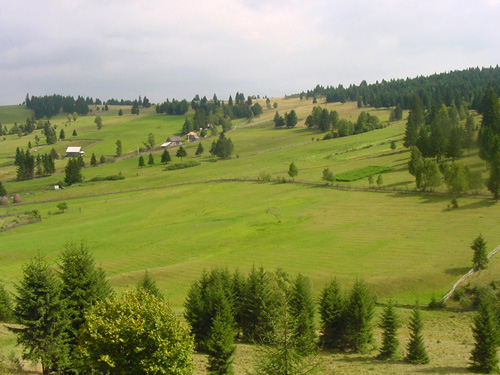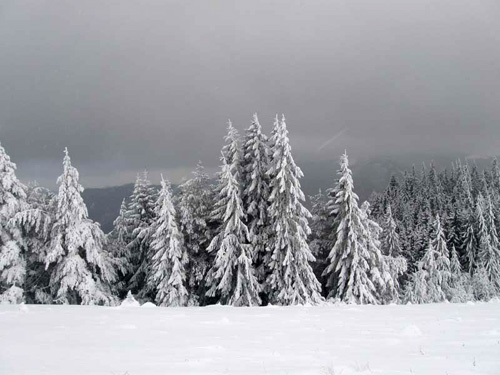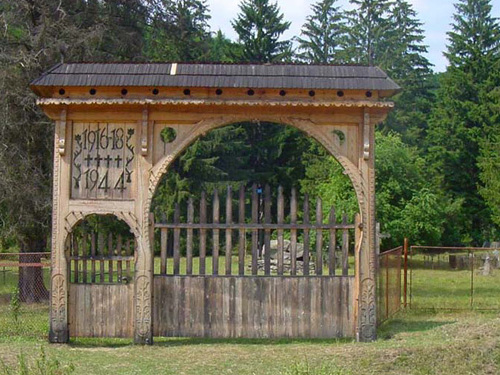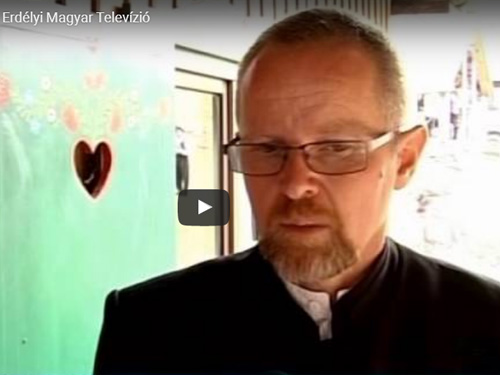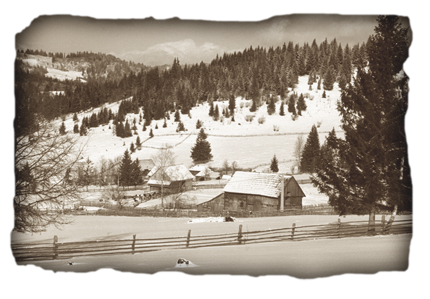 Csinód lies along the forestry road which is under reconstruction and asphalting and leads towards the Úz Valley, at a distance of 13 kms from Csíkszentmárton. Egerszék is situated northwards from Csinód. Both settlements emerged between the end of the 19th century and the first third of the 20th century. In many instances the houses in Csinód are built at a distance of 150-200 metres from each other, and they lie alongside the valleys of the swift-flowing River Úz and of the brooks running into it. The most populous brook valleys in the area are the following: Őrház Brook, Katirésze Brook and Aklosbérc Brook. Lesőd, which lies south-east from the village core, is also also part of the settlement where 5 families live altogether. The number of the Roman Catholic population living in the farm-houses exceeds 300.
Csinód lies along the forestry road which is under reconstruction and asphalting and leads towards the Úz Valley, at a distance of 13 kms from Csíkszentmárton. Egerszék is situated northwards from Csinód. Both settlements emerged between the end of the 19th century and the first third of the 20th century. In many instances the houses in Csinód are built at a distance of 150-200 metres from each other, and they lie alongside the valleys of the swift-flowing River Úz and of the brooks running into it. The most populous brook valleys in the area are the following: Őrház Brook, Katirésze Brook and Aklosbérc Brook. Lesőd, which lies south-east from the village core, is also also part of the settlement where 5 families live altogether. The number of the Roman Catholic population living in the farm-houses exceeds 300.
Both settlements have a little wooden church. The church in Egerszék dedicated to the Blessed Virgin was built in 1957, while the church consecrated to the Holy Trinity in Csinód was erected in 1997.The congregation is convened by the toll once a month. The parson of Csíkszentgyörgy celebrates mass once a month in Egerszék, and in the following month in Csinód.
There are also schools and nursery schools operated here in the alpines.
The main engagements of the population are kettle breeding and logging.
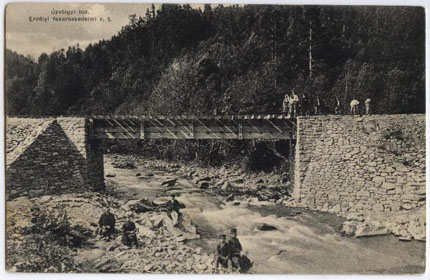 The farmers grow small amounts of potatoes and different kinds of vegetables needed for the household their tiny plough-lands and gardens. No artificial fertilizers and plant protection chemicals are used here. Rhye is the only cereal sown.
The farmers grow small amounts of potatoes and different kinds of vegetables needed for the household their tiny plough-lands and gardens. No artificial fertilizers and plant protection chemicals are used here. Rhye is the only cereal sown.
The population preserves peculiar beliefs owing to their lifestyles and isolation from the outside world.





